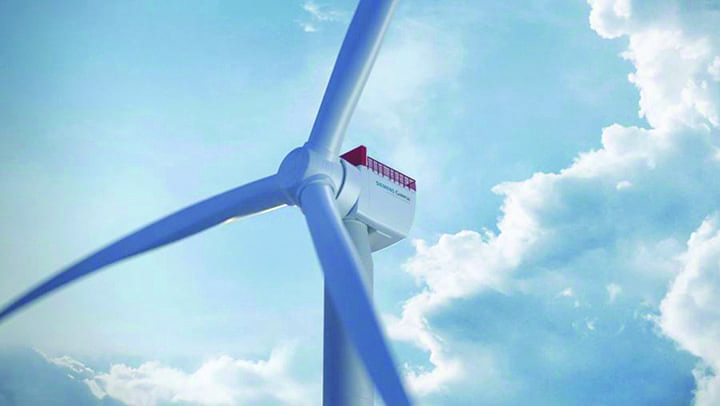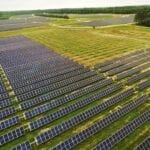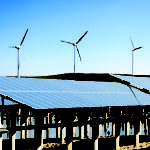Arguments continue about the impacts of climate change, but there’s little debate when it comes to where banks and other investors are putting their money.
Shareholders and institutional investors are pressuring companies to embrace clean energy. Financial houses and banks are ending their support for fossil fuels, directing their money toward renewable energy and technologies designed to combat climate change. Even oil and gas majors, such as BP, are moving away from their long-time core business to invest in renewables.
The European Investment Bank, the world’s largest multilateral financial institution, last year said it would phase out its multibillion-euro financing for fossil fuels within the next two years, becoming what it called the world’s first “climate bank.”
“Climate is the top issue on the political agenda of our time,” said the bank’s president, Werner Hoyer. “We will stop financing fossil fuels and launch the most ambitious climate investment strategy of any public financial institution anywhere.”
 |
|
1. The potential future effects of global climate change include more frequent wildfires; longer periods of drought in some regions; and an increase in the number, duration, and intensity of tropical storms. Source: Shutterstock/NASA Global Climate Change |
Fifth Third Bancorp, a major U.S. financial services company, in late September announced a new target of achieving $8 billion in sustainable financing by 2025. The company said its investments will include lending commitments and financing for renewable energy projects, including solar, wind, geothermal, biomass, and hydropower. Policymakers may argue over climate change (Figure 1), and some dismiss it altogether, but analysts who spoke with POWER acknowledge its impact on investing is very real.
“Climate change should be a major consideration in all investments going forward,” Ian Manchester, senior associate in Structured Finance at Distributed Solar Development, told POWER. “This includes industries from real estate to infrastructure, as well as the obvious power and energy market.”
Prioritizing Investments
Changing investment strategies may sound simple, but there’s more to it than just announcing a switch. Financial analysts say the market for investment products that are considered to be green or sustainable remains small, relative to the needs of investors. The absence of an economy-wide carbon pricing regime in the U.S. is a barrier (see sidebar), along with what analysts say is a misperception that investments in sustainable or ESG-focused projects—environmental, social, and governance—involve trading off financial returns when compared with traditional investment strategies. Investors looking at climate change impacts also should consider what technologies are being used to deal with issues caused by more powerful hurricanes, tropical storms, and wildfires, all tied to a warming Earth.
|
Programmatic Initiatives Spur Investment in Africa Africa’s power market has not been as accommodating to private financing as would be most beneficial to achieving wide-scale electrification across the continent. However, in 2012, a wave of new private-sector investments helped to build momentum and create systematic change. Private-sector financing increased nearly fivefold to $8.3 billion, with the number of projects nearly tripling from 15 to 43 between 2011 and 2012. This period witnessed the emergence of “programmatic development” with initiatives such as the International Finance Corp.’s Scaling Solar and the Global Energy Transfer Feed in Tariff (GETFiT) program; the development of renewable energy as an increasingly attractive alternative to fossil fuels; and a broadening, more-liquid investor base. Since that point, the private sector’s involvement in the energy market has grown to the tune of $28.2 billion. Such positive progress is indicative of a market that is more receptive to private involvement and the need for such external participation. This has been a welcome change from widespread contract cancellations and sclerotic policy reform. South Africa’s Renewable Energy Independent Power Producer Procurement (REIPPP) program encapsulates this change. Thirteen years of policy development has produced a transparent framework, enabling significant private-sector investment in the renewables space. A continuous (save for some hiccups a few years ago) pipeline of projects and robust regulatory framework have helped capture the best of a competitive landscape, significantly driving down costs. Over four bidding-round windows, 102 independent power producer (IPP) projects were signed off (compared to only a handful prior to REIPPP’s launch), creating 6,329 MW of renewable energy capacity. The competitive process as well as technological advances have witnessed a significant reduction in procurement costs. Between the first round of bids and the fourth, the average wind technology bid price fell by 37%, and solar has fallen by 69%, translating into lower prices for the end-user. African Infrastructure Investment Managers (AIIM) is the largest equity investor in REIPPP—one of the flagbearers of African IPP programs—with the projects it has invested in contributing to 24.5% of the total clean energy on the South African grid. The last round was particularly successful, with AIIM investing in nine projects, out of a total of 26. When fully operational, the projects AIIM has invested in will produce an additional 800 MW of energy. The power facilities will deliver about 2,425 GWh annually, preventing about 2.4 million tonnes of carbon emissions from traditional fossil fuel power plants per annum. When operating at full capacity, they are expected to supply enough green electricity to power about 522,730 medium-sized South African homes. In total, AIIM’s IDEAS Managed Fund holds interests across 27 projects involved in windows 1–4 of REIPPP, one of which is the 75-MW Renewable Energy Investments South Africa (REISA) solar photovoltaic (PV) farm. Spanning 210 hectares, 343,200 solar modules produce about 180,000 MWh of energy annually, preventing an estimated 125,000 tonnes of carbon emissions from traditional fossil fuel power plants. When operating at full capacity, REISA is expected to supply enough green electricity to power about 75,000 medium-sized South African homes. Its impact includes more than just power provision, however; it has also incorporated wider needs of the host communities through a business development and mentoring scheme, as well as an education initiative benefiting 5,000 locals. Impact driven by sustainable energy generation stretches far beyond the measurable and is a core component toward realizing Africa’s vast potential. Heightened strain on public finances opens the door for greater private-sector involvement. The data dictates this will only increase momentum in delivering a more connected, sustainable future. —Vuyo Ntoi is joint managing director of African Infrastructure Investment Managers (AIIM). |
Analysts agree that due to continued regulatory uncertainty, government support is necessary to lessen potential investment risks in both traditional and new energy resources. That’s a particular problem in the U.S., where a change in the political climate likely determines whether climate change is even considered a problem. Constant wrangling over tax credits and incentives also muddies the waters.
“It is not only extremely complicated to discover and apply for C&I [credits and incentives], but we have found the invisible complication to be compliance. Most C&I take multiple years to monetize,” Laurence Sotsky, CEO and director of Incentify, an enterprise technology firm dedicated to realizing the financial and societal goals of C&I, told POWER. (Read a POWER Interview with Sotsky here.)
“The nature of large-scale innovation, whether it is renewable energy or discovering new medicine… requires major financial gaps to be crossed at the planning and pre-commercialization levels,” said Sotsky.
“Twenty years ago, you simply could not make the business case to invest $10 billion in developing electric cars vs. investing $10 billion in making gas-powered SUVs [sport utility vehicles]. But when multiple levels of government step in to bridge those gaps in planning, now you can move the market,” he said. “In some ways, I don’t even think that the word ‘important’ does justice to exactly how crucial C&I is to large innovation—it’s not important so much as it is necessary. Without C&I, the business case for innovation at a macro scale does not exist.”
Building a Portfolio
A climate change investment strategy can include support of green energy, or money backing companies that make infrastructure—like those involved with manufacturing batteries for electric vehicles. Another plan is to climate-proof a portfolio, a belief that a warming world will create economic disruption, and preparing for that eventuality.
“Some of the problems we face today could have been avoided if we had previously taken a triple bottom line [essentially ESG] approach to investing in the past,” said Manchester. “Given all that we know now, it’s time that we factor in the outcomes of our investments and get things headed in the right direction.”
The U.S. Commodity Futures Trading Commission (CFTC) in a September report said, “Climate change poses a major risk to the stability of the U.S. financial system and to its ability to sustain the American economy,” noting adverse climate already is impacting “infrastructure, agriculture, residential and commercial property, as well as human health and labor productivity.” The CFTC report said that even the process of combating climate change—“which demands a large-scale transition to a net-zero emissions economy”—poses risks to the financial system, if market participants “prove unable to adapt to rapid changes in policy, technology, and consumer preferences.”
The CEO Climate Dialogue group has called on U.S. leadership to establish a “federal policy as soon as possible to protect against the worst impacts of climate change.” The group of 21 companies includes utilities such as DTE Energy, Exelon, Dominion Energy, Pacific Gas & Electric, Calpine, and PSEG, along with other energy companies such as Equinor, Total, and BP. They’ve joined with four environmental groups—Center for Climate and Energy Solutions, Environmental Defense Fund, The Nature Conservancy, and the World Resources Institute—to urge the president and Congress to enact a market-based approach to climate change.
 |
|
2. Investments in technology include ever-larger wind turbines, including Siemens Gamesa’s 14-MW SG 14-222 DD. Courtesy: Siemens Gamesa |
Environmental advocates say the financial community should proactively provide solutions to climate change, in part by being a catalyst for investments that promote economic resilience and the transition to a net-zero emissions economy. That could be new financial products and services, along with support for technologies that support cleaner energy (Figure 2).
Combating climate change does not come cheap. The International Renewable Energy Agency in 2019 said a technically and economically feasible path for limiting global warming to “well below” 2 degrees Celsius, in line with the Paris Agreement, would require an estimated $110 trillion of cumulative worldwide investment in the energy sector by 2050. ■
—Darrell Proctor is associate editor for POWER (@POWERmagazine).










